Soaring high above the competition, the Eagle Bracket is packed with heavy hitters and wild upsets waiting to happen. From Alaska’s untamed wilderness to the heart of D.C., only the strongest will spread their wings and advance. Who will rise, and who will take a nosedive? Read more below or enter your votes now.
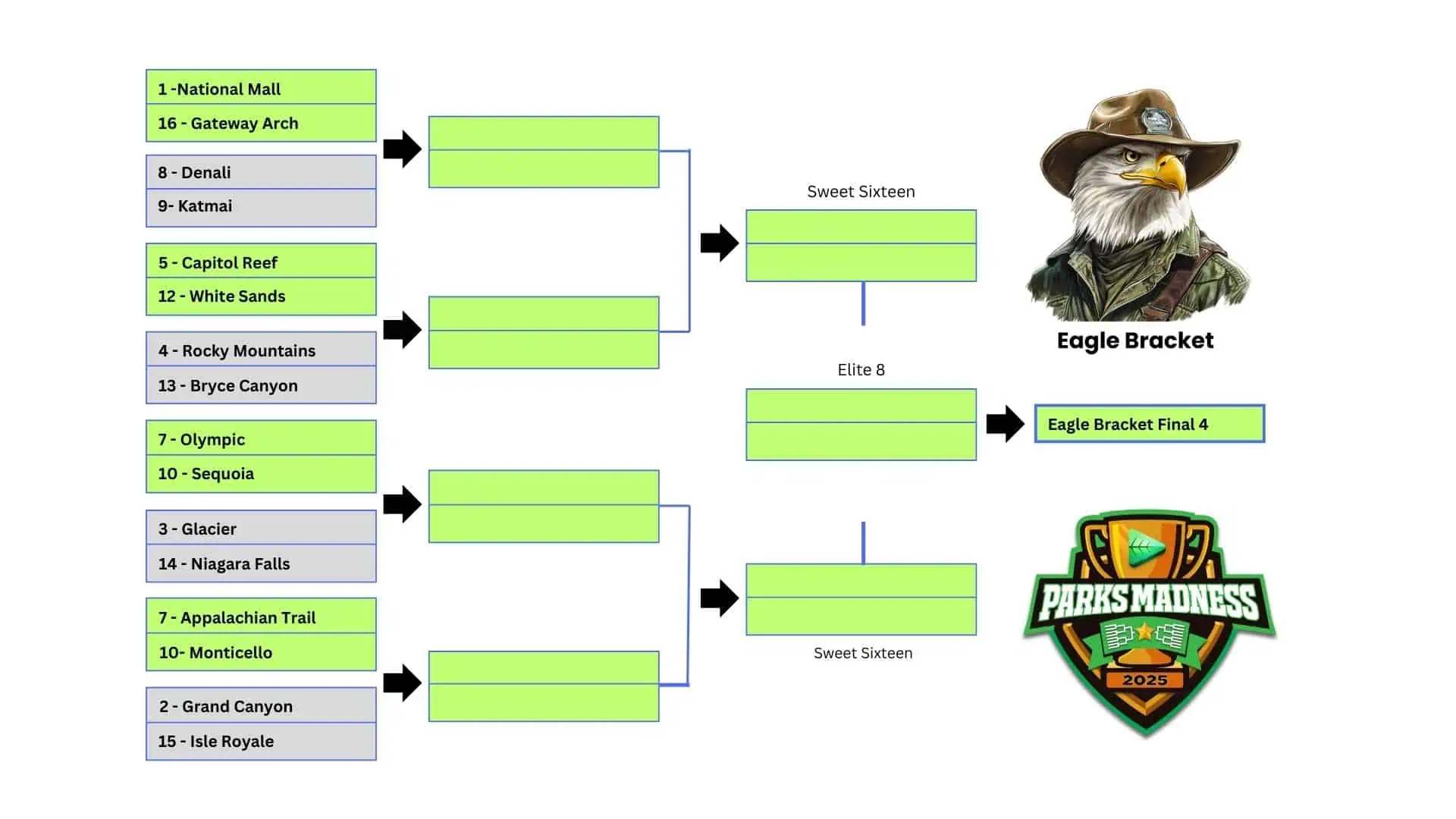
(1) National Mall vs (16) Gateway Arch
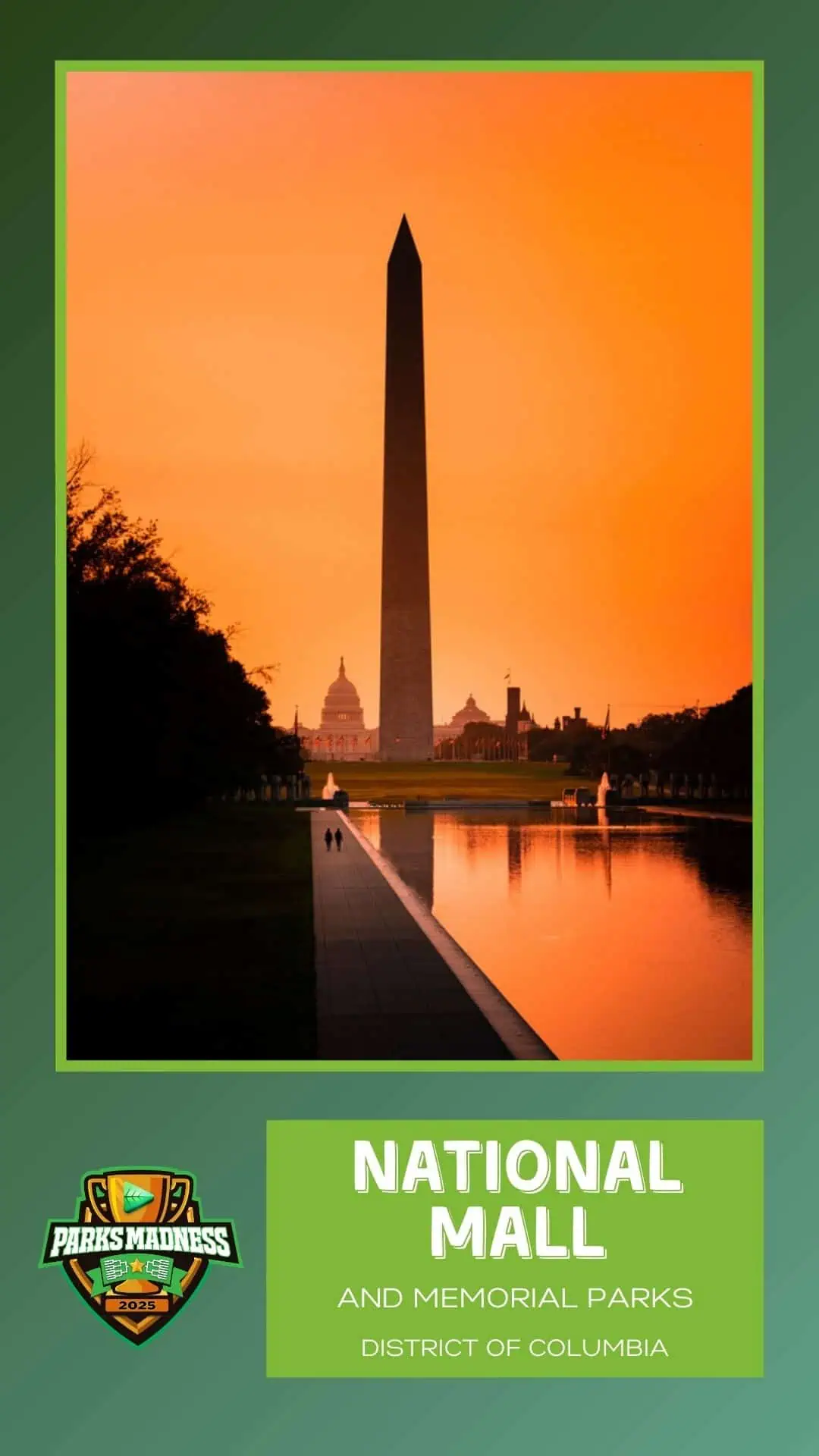
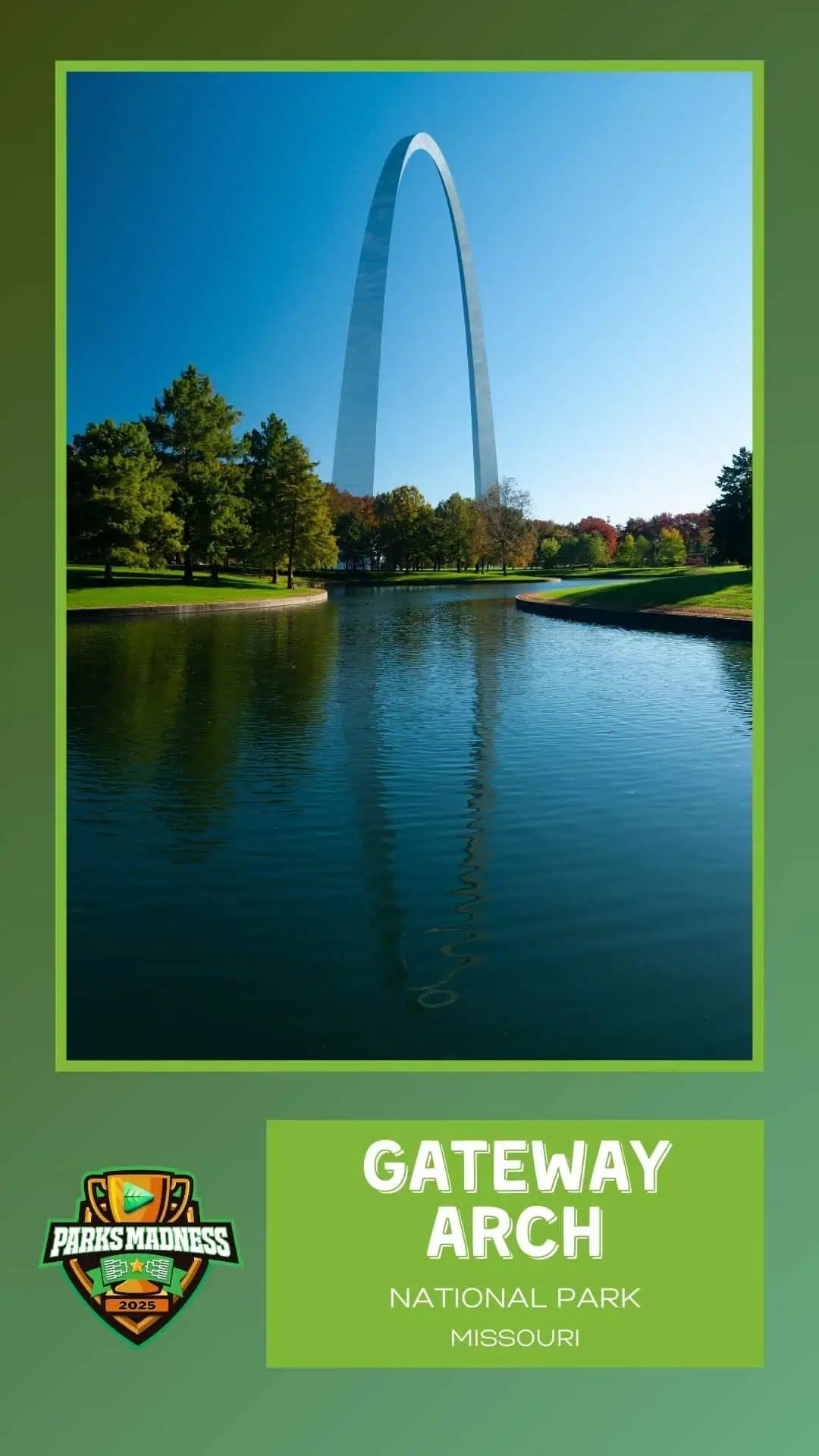
It’s a battle of symbolism in this first-round showdown. The National Mall is the heart of Washington, D.C., where history has been made time and time again. From the towering Washington Monument to the solemn Lincoln Memorial, this two-mile stretch is lined with some of the most significant landmarks in the country. More than 32 million visitors walk these paths every year, reflecting on the speeches and events that shaped the nation.
But Gateway Arch isn’t going down without a fight. St. Louis’s 630-foot stainless steel icon represents the spirit of westward expansion, and thanks to a sleek tram system, visitors can ride to the top for unbeatable views of the Mississippi River. At just over 1.5 million visitors a year, it sees a fraction of the National Mall’s foot traffic, but its stunning modernist design and breathtaking heights make it a worthy contender.
So what wins: the place where Martin Luther King Jr. delivered his “I Have a Dream” speech and countless historic events have unfolded, or the gateway to the American frontier?
Best Moves: Visit the Lincoln Memorial at night and see the illuminated Washington Monument reflected in the pool before you. Or ride to the top of the Gateway Arch for an unforgettable view of St. Louis.
Watch 24 Surefire Tips for a Successful Trip to Washington DC and Why Gateway Arch is National Park (but shouldn’t be).
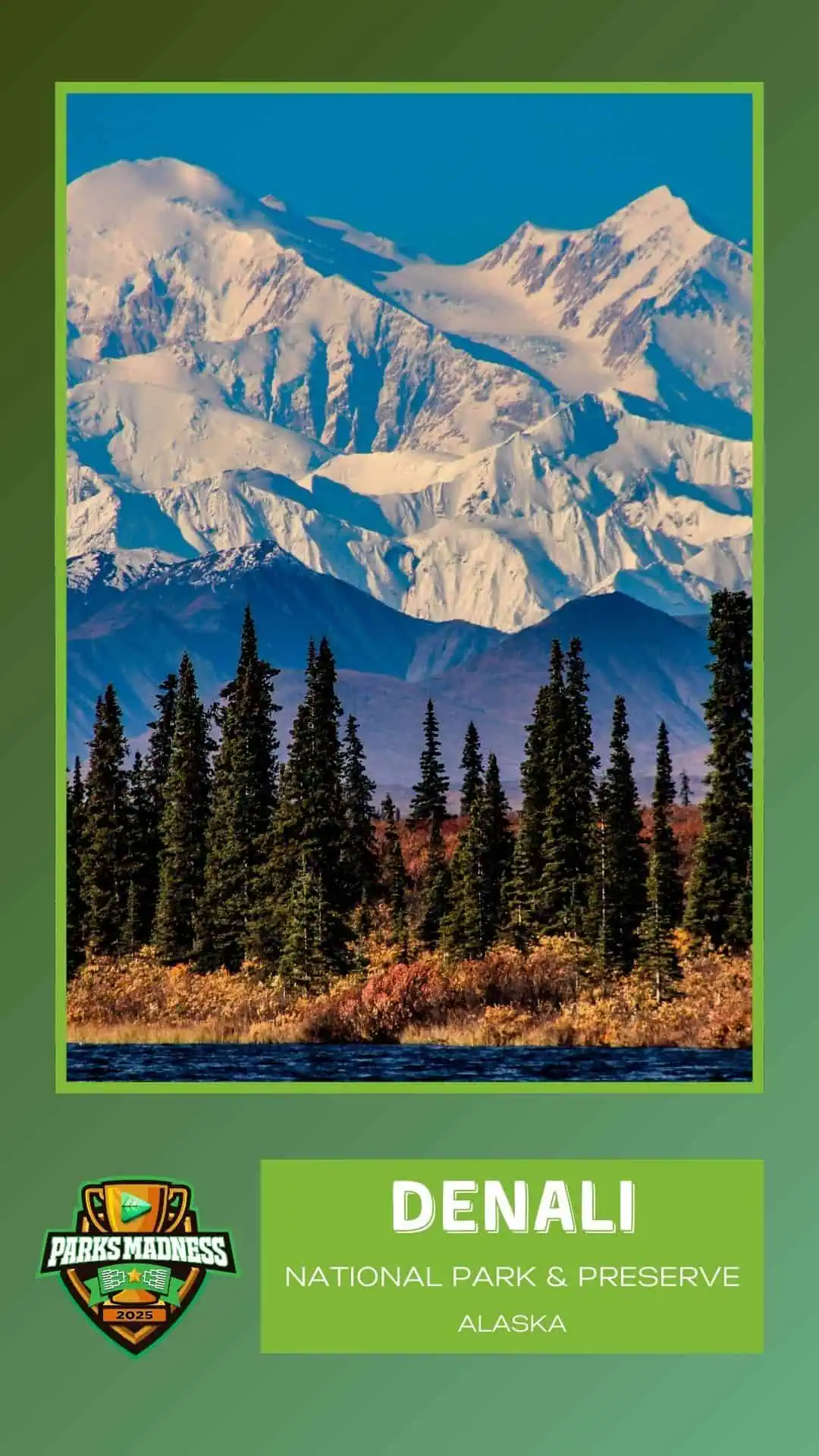
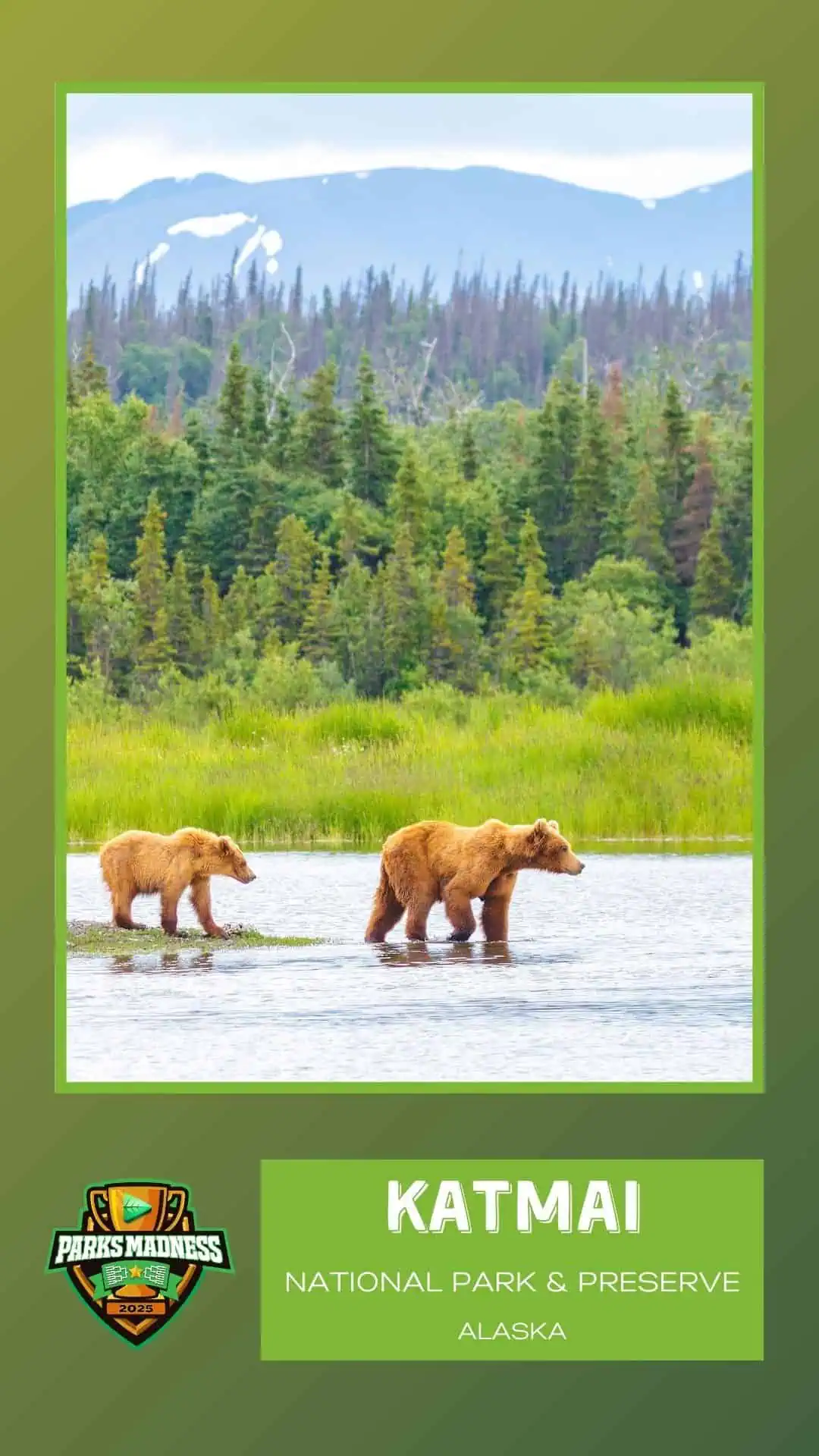
This Alaskan clash is the wildest matchup in the tournament. Denali National Park boasts North America’s tallest peak, the 20,310-foot Denali, surrounded by vast tundra and wildlife-filled valleys. With only one road through its six million acres, visitors often spot grizzly bears, wolves, and moose from the park’s signature bus tours. At just under 600,000 visitors a year, Denali offers adventure on an epic scale.
But Katmai National Park is home to one of the most iconic wildlife spectacles in the world—brown bears catching salmon at Brooks Falls. With fewer than 40,000 annual visitors, this park is about as remote as it gets, requiring a plane or boat to access. Once there, though, visitors witness bears up close from raised viewing platforms, a front-row seat to one of nature’s greatest shows.
Denali wins on sheer size and mountain majesty, but Katmai brings unmatched wildlife encounters. Will it be the mountain giant or the bear kingdom that advances?
Best Moves: Take a flightseeing tour over Denali’s icy peaks. Or view the bears at Katmai’s Brooks Camp.
Watch Denali Via the Alaska Gold Star Railroad and Amazing Katmai
(5) Capitol Reef vs (12) White Sands
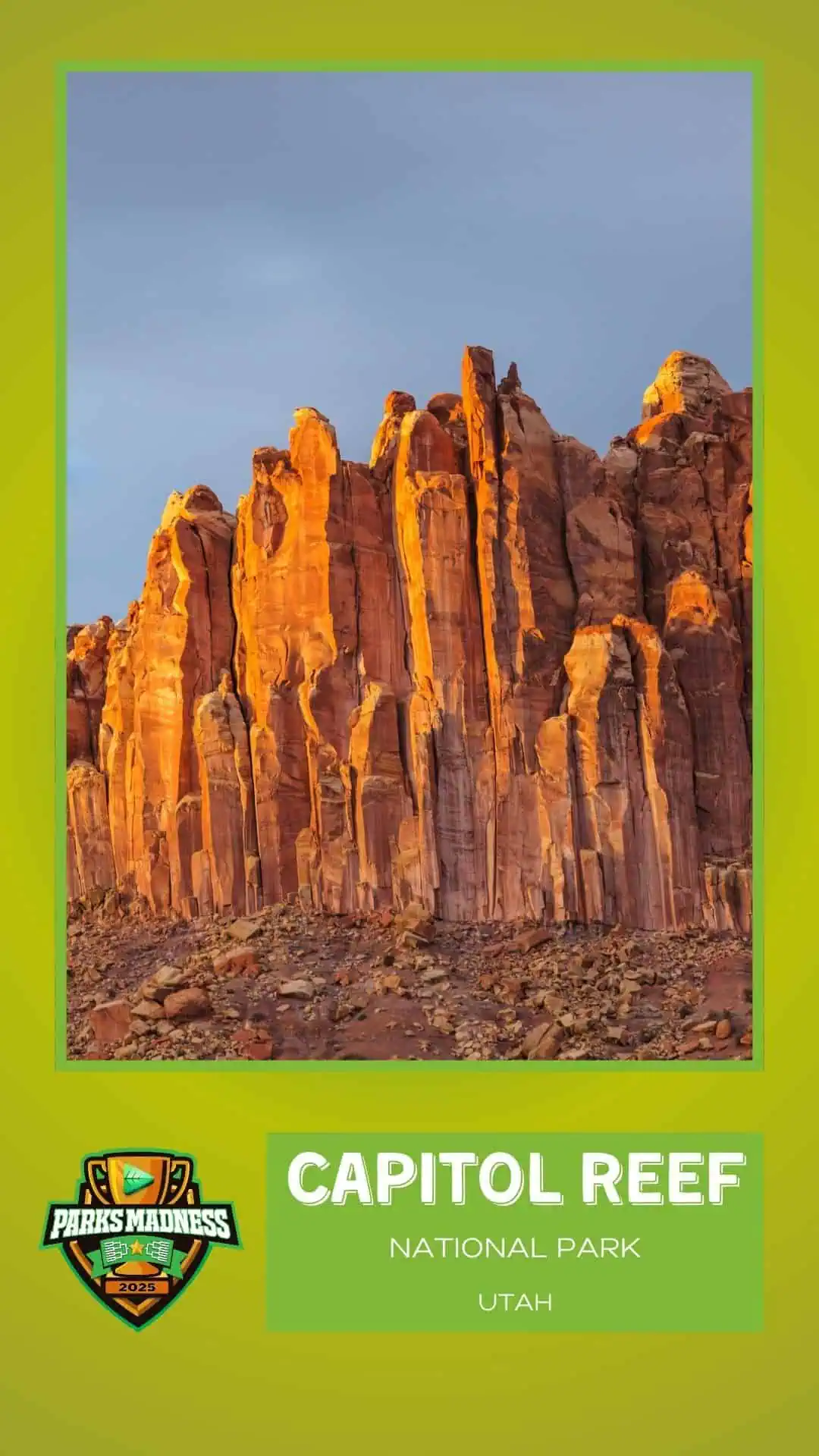
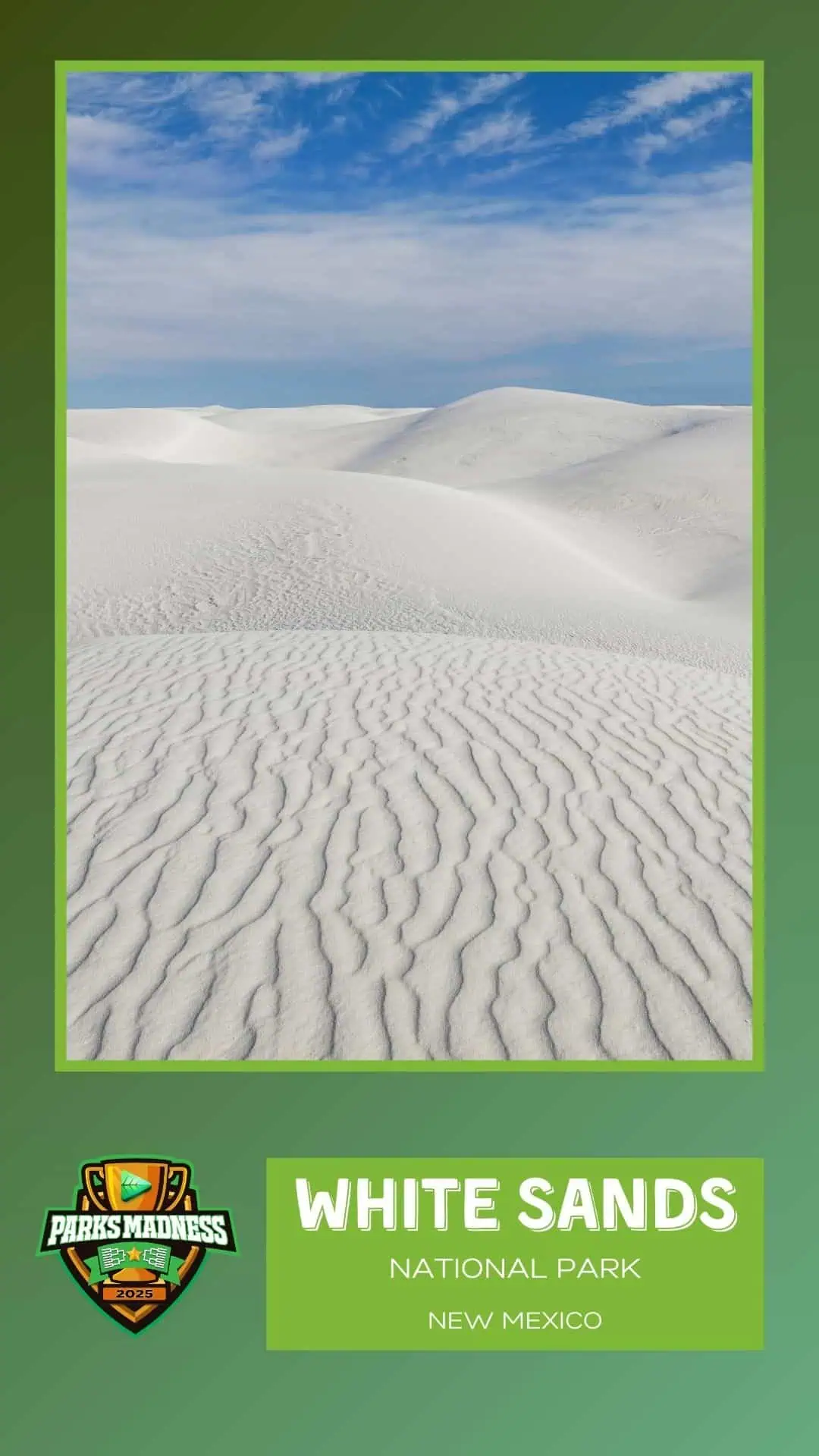
A sleeper matchup of two of the country’s most underrated parks. Capitol Reef National Park, often overlooked in Utah’s Mighty Five, features stunning red rock cliffs, winding slot canyons, and the famous Waterpocket Fold—a 100-mile geologic wrinkle in the Earth’s crust. With just over a million annual visitors, it’s a hidden gem for hikers and off-the-beaten-path explorers.
White Sands, on the other hand, is a surreal desert landscape, where rolling gypsum dunes stretch as far as the eye can see. The bright white sand stays cool even in the summer heat, and visitors often slide down the dunes on sleds. It’s also home to unique wildlife, including the bleached earless lizard, which has evolved to match its environment.
Rock formations vs. sand dunes—who takes this one? Capitol Reef’s rugged beauty is hard to beat, but White Sands’ dreamlike scenery and family-friendly fun make it a worthy challenger.
Best Moves: Pick a fresh peach in Capitol Reef’s Fruita orchards or sled down the glowing white dunes at White Sands.
Watch The Best of Capitol Reef NP and Hiking and Sledding in White Sands!
(4) Rocky Mountain vs (13) Bryce Canyon
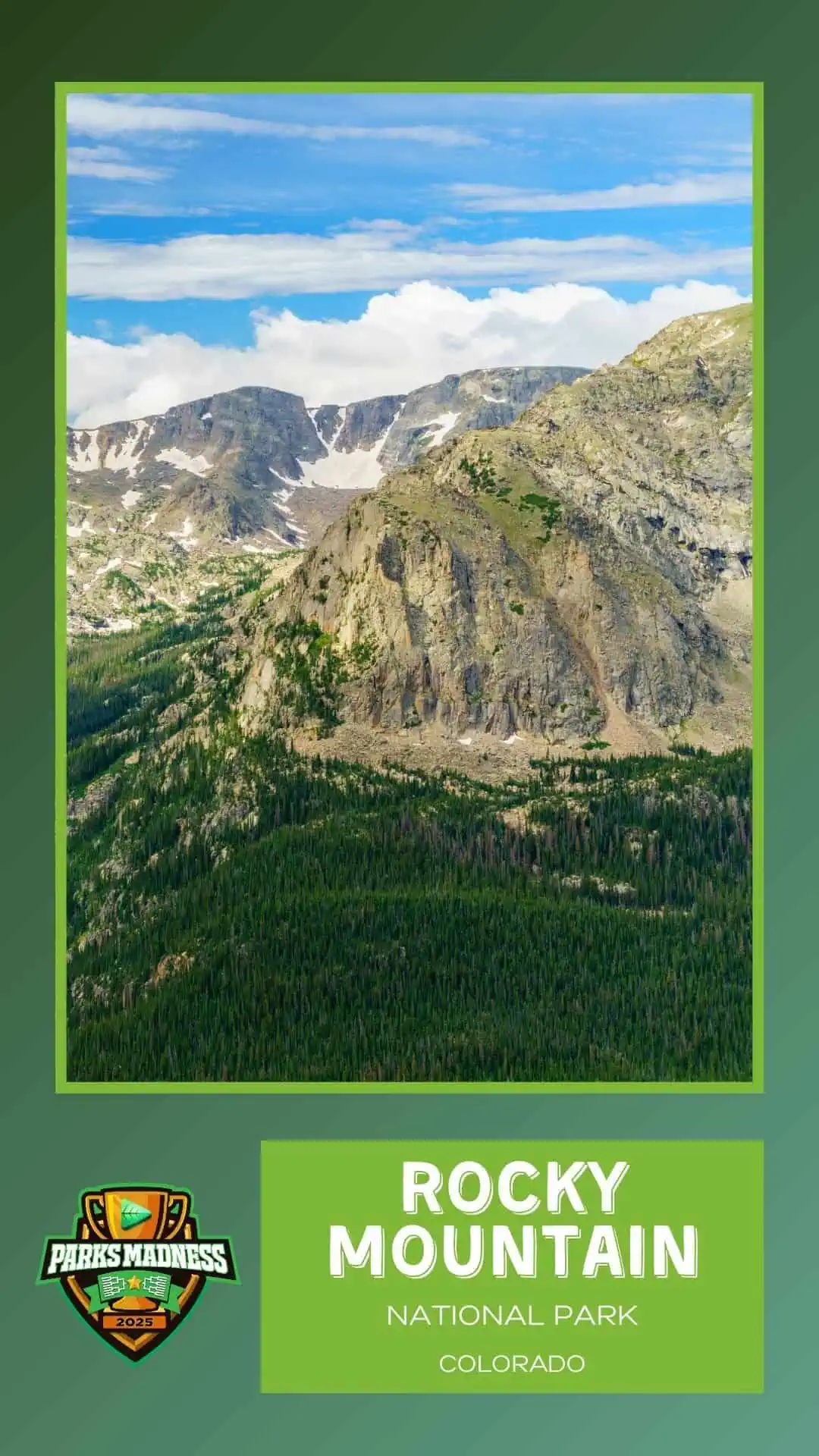

This high-altitude face-off pits two stunning western parks against each other, but they couldn’t be more different. Rocky Mountain National Park is a vast alpine wonderland, home to jagged peaks, wildflower-filled meadows, and iconic wildlife like elk and bighorn sheep. The legendary Trail Ridge Road climbs to over 12,000 feet, offering breathtaking views along one of America’s highest paved roads. With over 4 million annual visitors, this park is a heavyweight contender.
Bryce Canyon, on the other hand, is a geological masterpiece known for its mesmerizing hoodoos—tall, thin spires of red rock carved by erosion. While much smaller than Rocky Mountain, Bryce’s otherworldly landscape has a devoted following. At sunrise, the hoodoos glow in fiery oranges and pinks, creating one of the most magical vistas in the national park system.
Rocky Mountain wins on sheer scale and elevation, but Bryce brings a unique, almost alien beauty. Can its hoodoos outshine Colorado’s mighty peaks?
Best Move: Watch the sun rise over Bryce’s Inspiration Point for an unforgettable view. Or hike to Dream Lake in Rocky Mountain for picture-perfect mountain scenery.
Watch Riding a Horse into Bryce Canyon and Hiking to GORGEOUS Sky Pond in Rocky Mountain NP
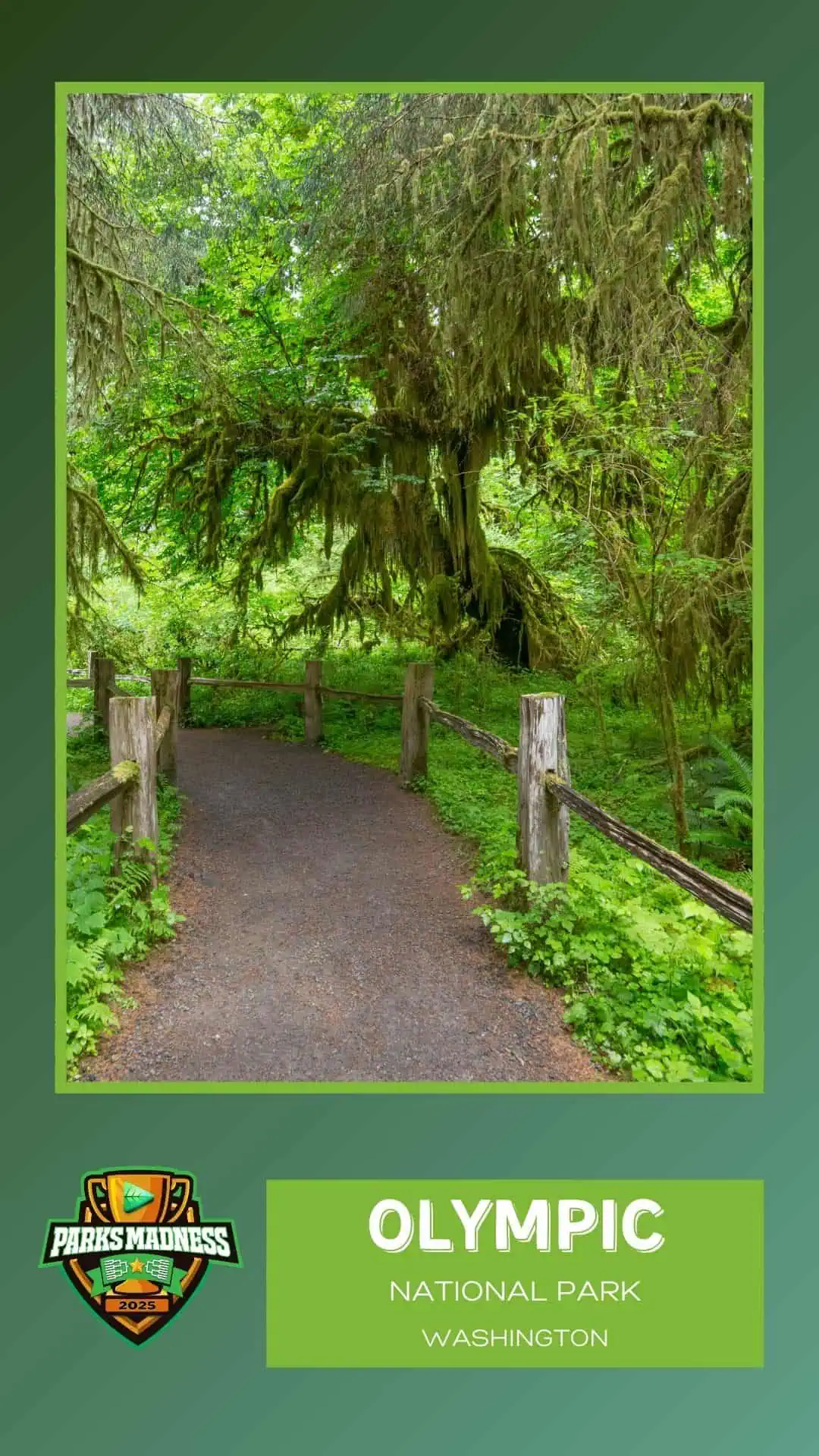

Rainforests vs. redwoods—this matchup is all about trees. Olympic National Park in Washington is a landscape of extremes, from misty coastline to rugged mountains to the lush Hoh Rainforest, one of the wettest places in the U.S. Covered in moss and ferns, it looks straight out of a fairy tale. Add in tide pools, hot springs, and Roosevelt elk, and you’ve got an incredibly diverse park.
Sequoia National Park, meanwhile, is home to the world’s largest trees. The General Sherman Tree—standing at 275 feet tall and over 36 feet in diameter—is the undisputed champion of the forest. The park’s towering sequoias are true giants, making visitors feel tiny in comparison.
So which tree titan takes the win? Olympic is more diverse, but Sequoia’s massive trees are legendary.
Best Move: Walk among the driftwood at Kalaloch, on the rugged Pacific coast of Olympic, or explore Sequoia’s Crystal Cave—a marble cavern filled with stunning stalactites, stalagmites, flowstones, and rare cave formations.
Watch Olympic NP: How to Visit and What to See and Travel Guide to Sequoia & Kings Canyon NP
(3) Glacier vs (14) Niagara Falls
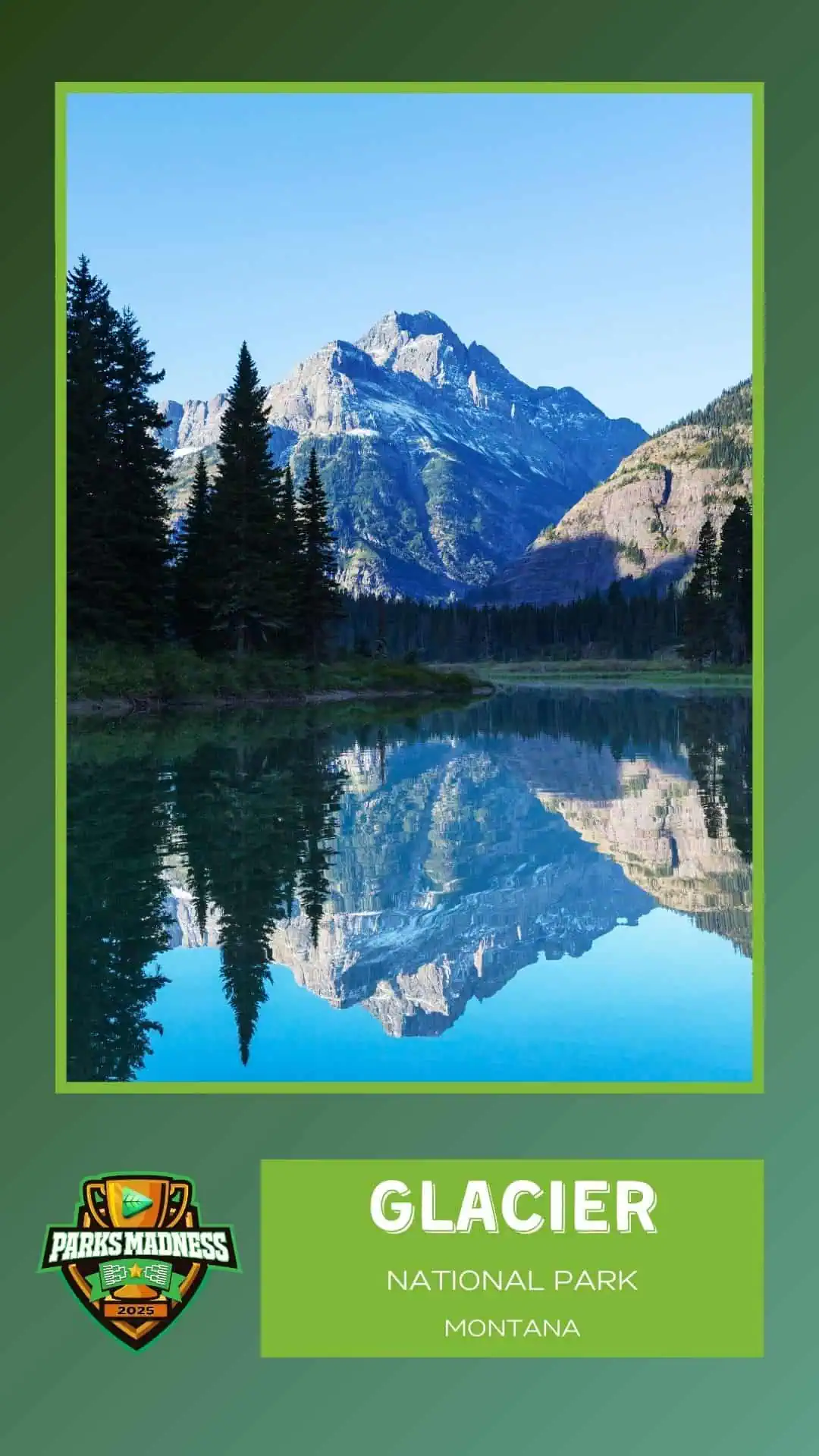

The Crown of the Continent vs. The Honeymoon Capital. Glacier National Park in Montana is a paradise of jagged peaks, deep valleys, and pristine alpine lakes. Its legendary Going-to-the-Sun Road is one of the most scenic drives in the country, while its namesake glaciers are remnants of the Ice Age. With nearly 3 million annual visitors, Glacier is a hiker’s dream.
Niagara Falls may not have mountain peaks, but it brings sheer force—more than 3,100 tons of water crash over its falls every second. It’s one of the most famous waterfalls in the world, straddling the U.S.-Canada border and drawing over 9 million visitors a year. The Maid of the Mist boat ride takes guests right into the heart of the thundering falls for an unforgettable experience.
Glacier wins on wilderness and scenery, but Niagara’s raw power and accessibility make it a serious contender. Which water wonder moves on?
Best Move: Hike the Highline Trail in Glacier for panoramic valley views. Or rent a kayak and explore the Niagara Falls National Heritage Area.
Watch The Complete Guide to Glacier National Park and The Natural Wonder of Niagara Falls
(7) Appalachian Trail vs (10) Monticello
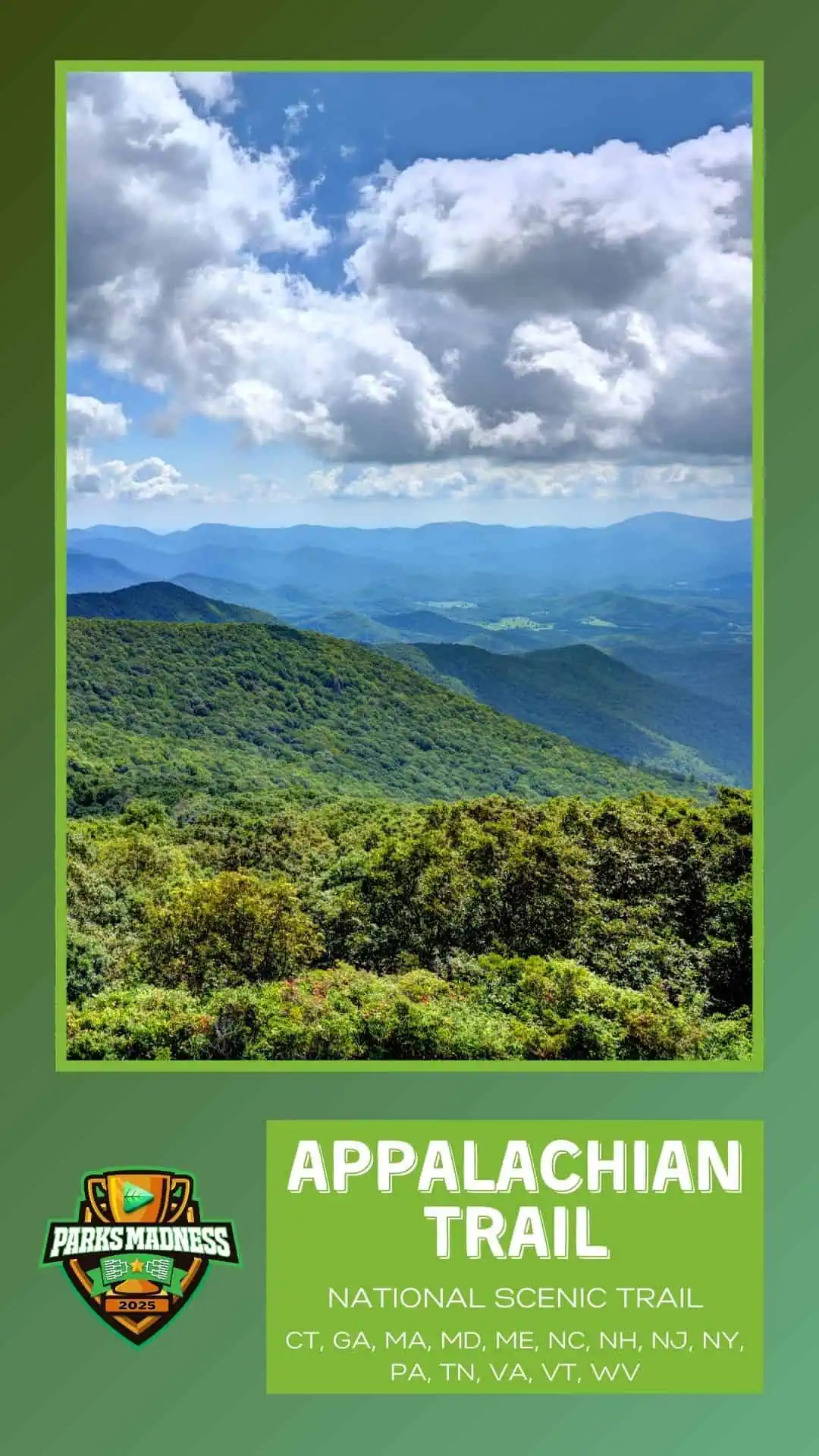
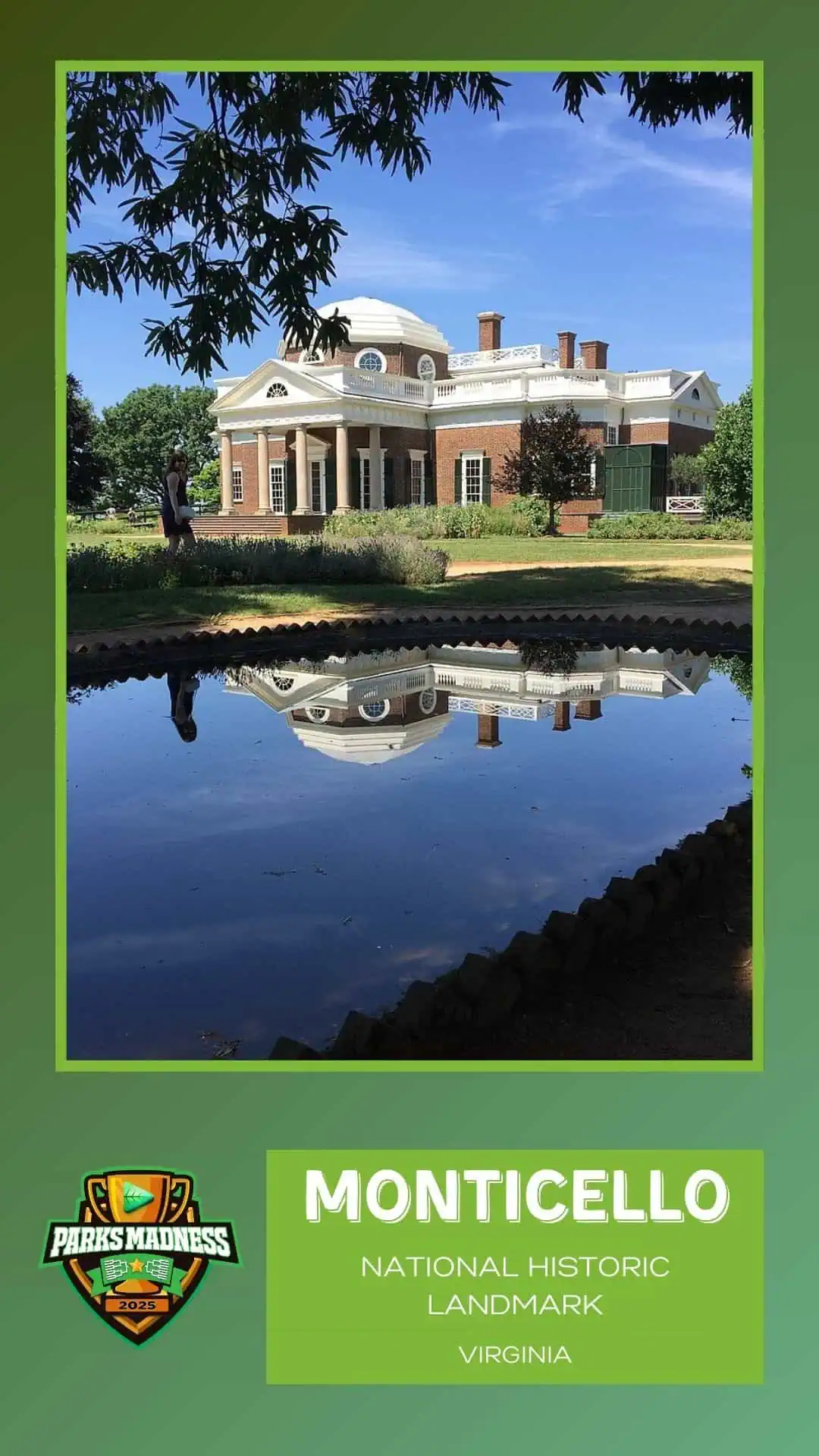
This matchup is a clash of endurance vs. elegance. The Appalachian Trail (AT) is one of the longest continuous footpaths in the world, stretching 2,190 miles from Georgia to Maine. Completing it is a bucket-list achievement, but even a day hike along its misty ridges and deep forests offers a taste of adventure. It’s wild, remote, and a symbol of the American outdoors.
Monticello, Thomas Jefferson’s mountaintop estate in Virginia, is a different kind of national treasure. A UNESCO World Heritage Site, this meticulously designed home reflects Jefferson’s brilliance as an architect and inventor. Visitors can explore its historic rooms, lush gardens, and even see the famous polygraph machine he used for copying letters.
One represents the rugged beauty of the backcountry, while the other showcases American history and innovation. Which one walks away the winner?
Best Move: Take in the panoramic views from McAfee Knob on the AT. Or visit the Burial Ground for Enslaved People at Monticello, a place to honor and reflect on the lives and contributions of the people enslaved during Thomas Jefferson’s lifetime.
(2) Grand Canyon vs (15) Isle Royale
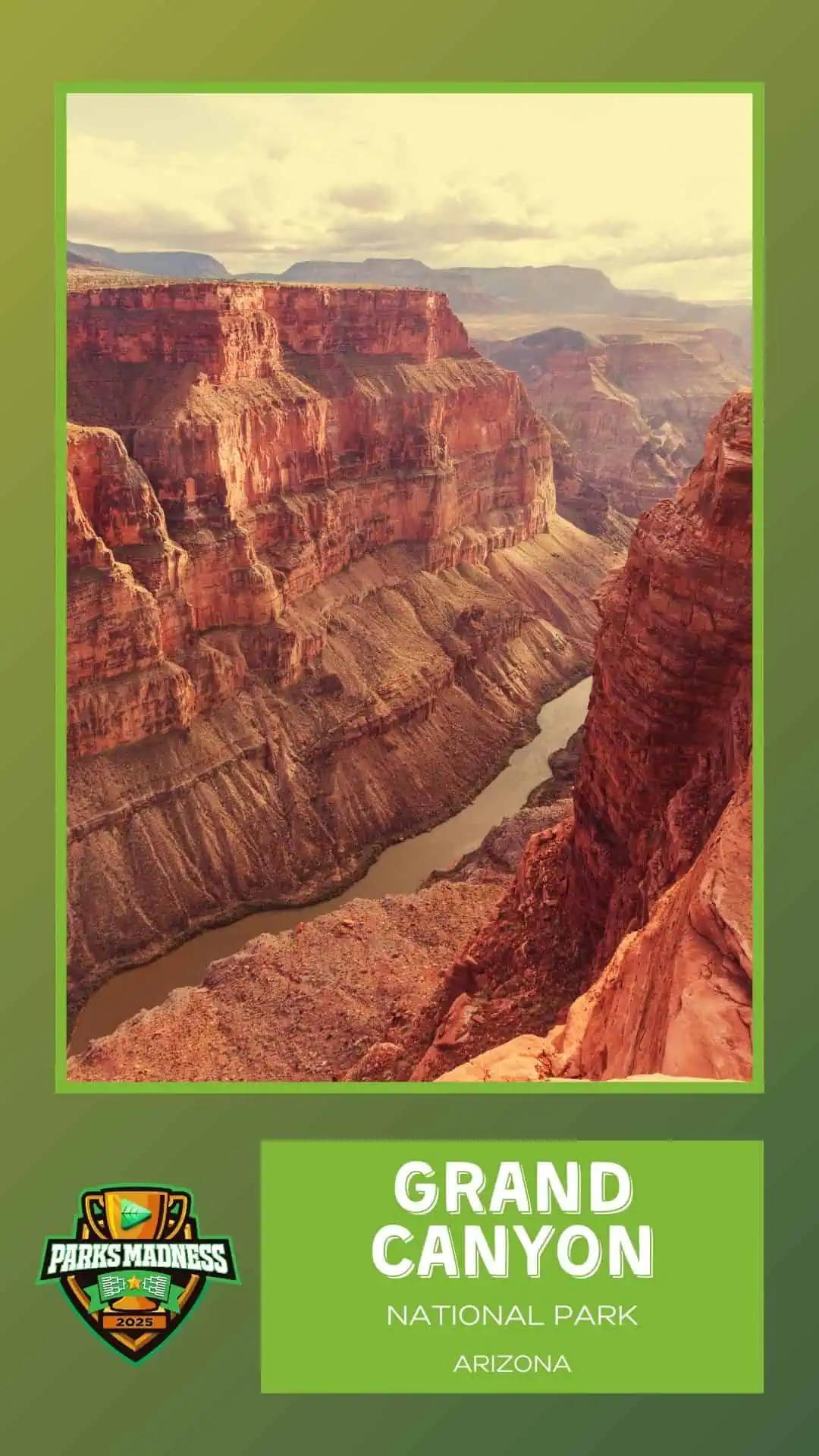
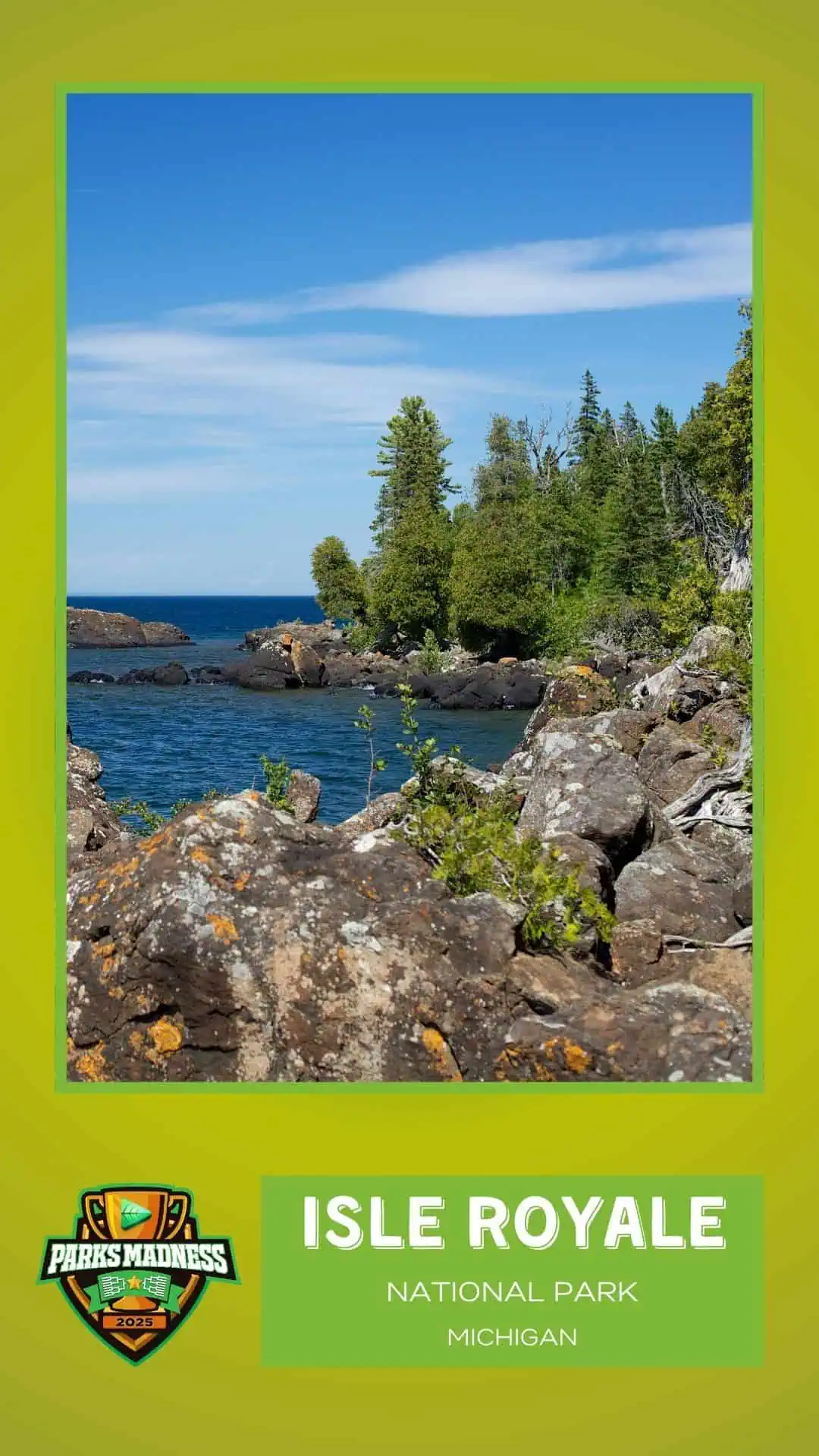
A David vs. Goliath matchup if there ever was one. The Grand Canyon is one of the most awe-inspiring places on Earth, a mile-deep chasm carved by the Colorado River over millions of years. Over 4.7 million visitors come each year to stand at the rim and take in its vastness. Hiking to the bottom is a grueling but rewarding challenge, and for the truly adventurous, rafting the Colorado offers an unparalleled experience.
Isle Royale, a remote island in Lake Superior, is the polar opposite. With fewer than 30,000 annual visitors, it’s one of the least-visited parks, but that’s part of its magic. Moose and wolves roam its dense forests, and kayakers can paddle its rugged shoreline without another soul in sight.
The Grand Canyon is grand in every way—size, scenery, and crowds. Isle Royale is small, quiet, and wild. Will the underdog pull off the ultimate upset?
Best Move: Hike the Cape Final Trail for a peaceful forest walk that ends in one of the North Rim’s most stunning panoramic canyon views. Or Scuba dive one of the ten major shipwrecks on Isle Royale, home to the National Park Service’s most intact collection of shipwrecks.
Watch The North Rim: 10 Things to Know. Watch A Royale Escape to the Wild in Northern Michigan.

